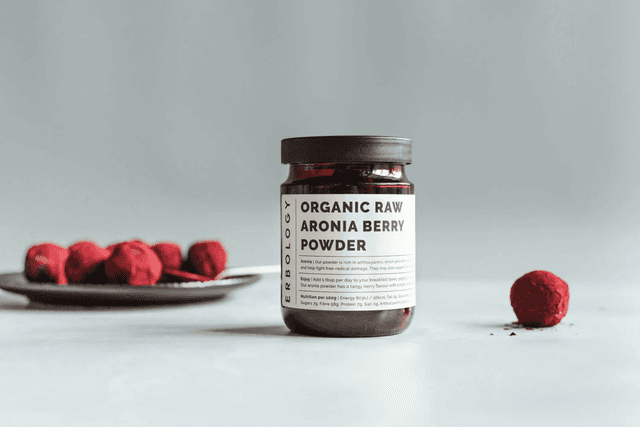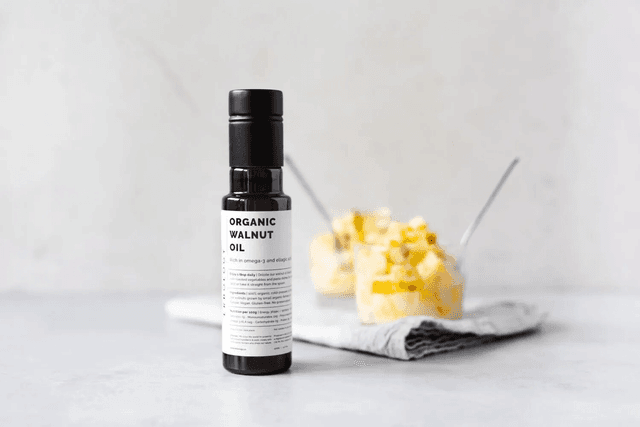21 Oct 2022
What foods are high in antioxidants?
The human body’s cells face continuous threats every day. One of the most common threats to our health are free radicals. Antioxidants otherwise known as “free-radical scavengers'' help neutralise these unstable molecules in the human body. This is important because they help to prevent cell damage caused by free radicals. In other words, free radicals can cause oxidative stress, which can increase the risk of diseases, including cancer and heart disease.(1)
Fat soluble vs water soluble antioxidants
Antioxidants can be either fat soluble or water soluble. Fat soluble antioxidants act primarily in cell membranes, such as vitamin E. Whereas, water soluble antioxidants perform their actions in the fluid inside and outside cells, for example vitamin C.
Vegetables and fruits are rich sources of antioxidants. However, antioxidants are not only natural but can also be man-made substances.(2)

Antioxidants in food production
Because of their ability to inhibit oxidation, antioxidant preservatives play a crucial role in food production. Antioxidants can increase the shelf life of both natural and processed foods. Therefore, they’re frequently used as food additives. For example, vitamin C is often added to processed foods to act as a preservative.(3)
Due to the many proposed benefits of antioxidants, they continue to be studied all over the world. In this article we'll look at examples of foods high in antioxidants, but first let’s explore the impact of free radicals and oxidative stress on our health.
How do free radicals function?
This next section is a bit scientific, so bare with us! Free radicals are unstable atoms that cells produce as the body processes food and reacts to the environment. When there are more free radicals than antioxidants, it can lead to a state called oxidative stress. When the two are balanced, our cells can go about their daily routine without damaging themselves, because the cell neutralises free radicals with antioxidants.
During periods of oxidative stress, there are no antioxidants present. Free radicals go in search of other molecules in the cell which it can react with and steal an electron from to stabilise itself. Important substances like lipids, proteins and DNA are common targets. Because a molecule is without an electron it looks for another electron itself. As a result, a chain reaction sets off where molecules go around stealing electrons.
This continues until a certain type of free radical can pair up with others of the same type. Continuous oxidative stress damages our DNA and other significant molecules in our bodies. Therefore, without antioxidants, free radicals cause serious harm very quickly.(4)
Several lifestyle, stress, and environmental factors promote excessive free radical formation and oxidative stress, including:
- Smoking
- Air pollution
- Consumption of alcohol
- High blood sugar levels
- Exposure to UV light
It’s important to note that, at low levels, free radicals aren’t all bad. Many free radicals are necessary and used by our body's cells to kill invading bacteria. For example, our immune cells use free radicals to fight infections. Phagocytes, are a specific type of germ-fighting white blood cell that produce and store free radicals which destroy invading pathogens.(5)

Diseases linked to oxidative stress
Unfortunately, damage to important elements of our cells has consequences, which link free radicals to numerous diseases. Therefore, it’s important to try and avoid oxidative stress when we can.
In most cases oxidative stress causes inflammation. Infections and injuries trigger the body’s immune response. Immune cells then produce free radicals while fighting off invading germs. As a result, free radicals damage healthy cells, leading to inflammation. Usually, once the immune system eliminates the infection or repairs damaged tissue, inflammation stops. However, oxidative stress can also trigger the inflammatory response, which produces more free radicals, leading to further oxidative stress and creating a cycle. This may lead to several conditions, including heart disease, diabetes, cardiovascular disease, and arthritis.(6)
The effects of oxidative stress may also contribute to several neurodegenerative conditions, such as Alzheimer’s disease. The brain is especially susceptible to oxidative stress because brain cells consume 20% of the total amount of oxygen the body needs to fuel itself. Brain cells require oxygen to perform intense metabolic activities that generate free radicals. These free radicals help support brain cell growth and cognitive functioning. However, oxidative stress modifies proteins, such as amyloid-beta peptides in a way that contributes to the accumulation of plaque in the brain, which is a key marker of Alzheimer’s disease.(7,8)
Types of dietary antioxidants and foods high in these antioxidants
Dietary antioxidants are substances that significantly decrease the adverse effects of reactive oxygen and nitrogen species, on normal physiological functions in humans. Examples of dietary antioxidants and foods high in antioxidants include:
Vitamin A. This antioxidant is important for vision, growth, cell division, reproduction and immunity. It’s also worth noting that beta-carotene from plant-based sources is converted to vitamin A. Sources include: sea buckthorn berries, carrots, spinach, dairy, eggs, and liver.(9)
Vitamin C. This water-soluble antioxidant known as ascorbic acid is an essential dietary nutrient. It's involved in many body functions, including absorption of iron, proper functioning of the immune system, and maintenance of healthy bones and teeth. Berries, citrus fruits, and bell peppers are great sources.(10)
Vitamin E. This fat-soluble antioxidant plays a critical role in protecting cell membranes against oxidative damage. Vitamin E rich foods include: nuts, seeds, and cold-pressed plant-based oils, such as amaranth, chia and hemp.(11)
Lycopene. A type of organic pigment called a carotenoid that gives some vegetables and fruits a red colour. It can protect DNA, proteins, and lipids against oxidation. In addition, lycopenes can act on other free radicals such as hydrogen peroxide, nitrogen dioxide and hydroxyl radicals. Typically lycopenes are present in pink and red fruits and vegetables, including tomatoes and watermelon.(12)
Lutein. In the eye, lutein's role as an antioxidant lowers the activity of free radicals, which can cause damage to the macula and other parts of the eye. It also helps to absorb harmful high-energy blue light to protect and maintain healthy eyes. You can find lutein in leafy greens, corn, and oranges.(13)
Selenium. This antioxidant plays an important role in the health of your immune system. Selenium helps lower oxidative stress in the body, which reduces inflammation and enhances immunity. Selenium rich foods include: rice, whole grains, legumes and nuts.(14) Brazil nuts are particularly high in selenium.
Flavonoids. Antioxidant flavonoids may effectively control key steps of cell growth and differentiation, which is key in the development of individual organs. Cabbage, kale and milk thistle are great sources of flavonoids.(15)
Phenols. On regular eating, phenols promote the anti-inflammation capacity of human beings. Cocoa, broccoli and tomatoes are particularly rich in phenolic compounds.(16)
Ellagic acid. The antioxidant properties of ellagic acid have prompted research, which shows that it may boast powerful anti-inflammatory, cancer-fighting properties. The best sources of ellagic acid in the diet are strawberries, cherries, and walnuts.(17)
Glutathione. This antioxidant is essential for the immune system's proper functioning and is vital in building and repairing tissue. Spinach, avocados and asparagus are some of the richest dietary sources.(18)





